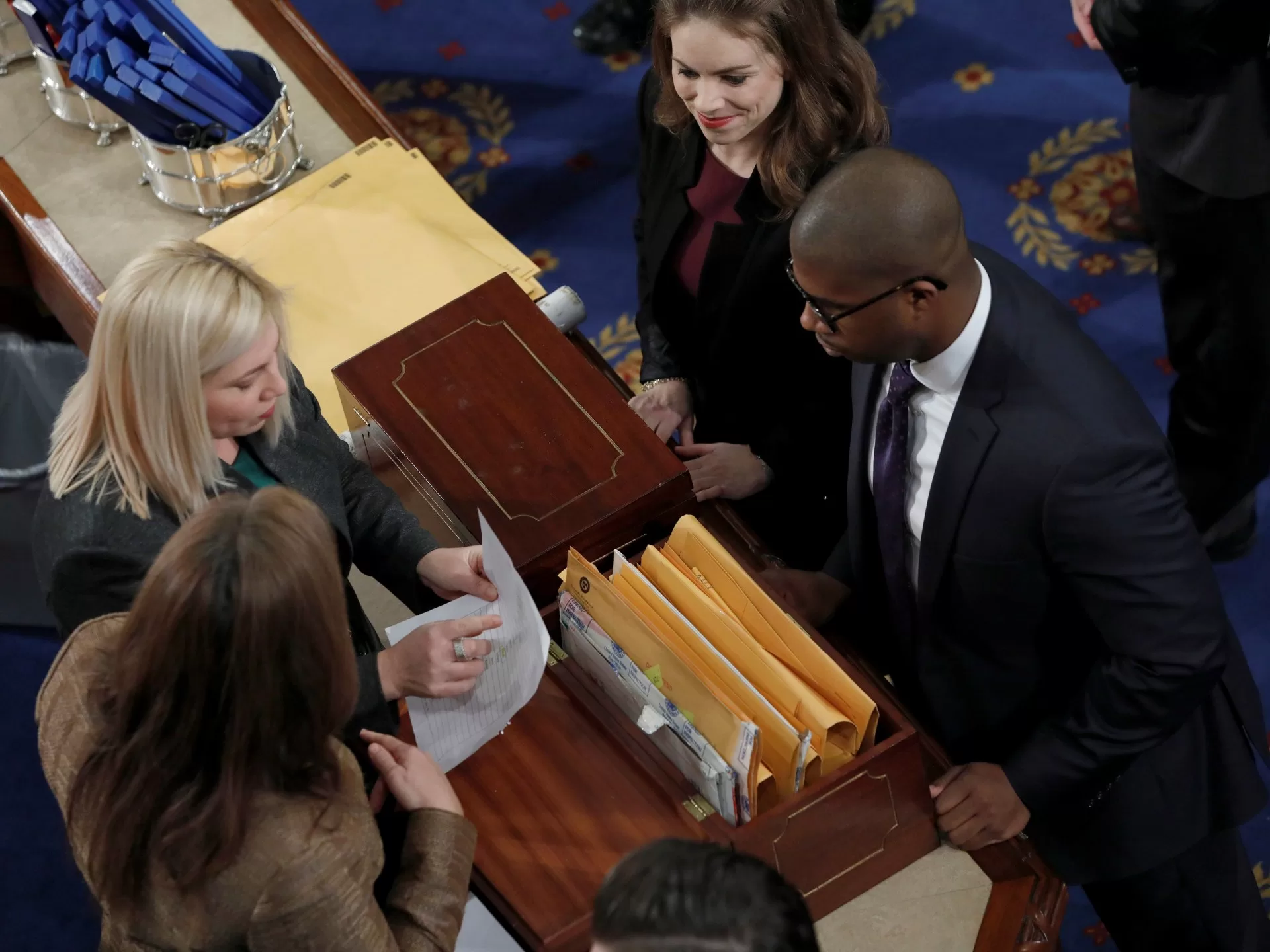EXPLAINER
In the US, presidential elections are decided by a state-based vote allocation system. Here’s what you need to know.
It’s at the heart of how presidential elections in the United States are decided. But for many, the Electoral College is a mystery, wrapped in a riddle, shrouded in an enigma.
It doesn’t have to be confusing, though.
To understand the Electoral College system, you first have to know that US presidents are not elected by the national popular vote: the total number of votes each candidate receives.
Instead, a group of 538 so-called “electors” select the president. These electors make up the Electoral College.
So who are these electors?
Before the election, the political parties in each state choose a slate of electors: real people who ultimately cast a vote for the president. Very often, the electors are party officials or supporters.
Each state gets the same number of electors as it has representatives in the US House of Representatives and the US Senate.
For example, Michigan gets 15 Electoral College votes. That corresponds to the two senators and 13 House members that represent the state in Congress.
Now that we know who these electors are and how many represent each state, how are their votes allocated? Here’s where it gets fun.
In nearly all the states across the US, the presidential candidate who gets the most votes wins all that state’s electors: It’s a winner-takes-all system. Even if a candidate wins a state narrowly, they still get all the electors.
The outliers are Maine and Nebraska, which allocate their electors based on a more complicated system that reflects the popular vote on the state and congressional district levels.
The District of Columbia — which is not a state but encompasses the country’s capital — also gets three Electoral College votes.
But here is the most important part: To win the White House, a presidential candidate must win the support of a majority of the electors.
So out of a total of 538 Electoral College votes, they need at least 270 to win.
The electors ultimately cast their votes in December, about a month after the election.
Their votes are then certified by Congress in early January, when the president is confirmed and takes office.
So what does this all mean?
Effectively, to win the US presidency, a candidate has to win support in enough key states to reach that magic Electoral College number of 270.
Under this system, a candidate who wins the popular vote — the most votes in total across the US — may not actually win the White House.
One recent example came in 2016, when Democratic presidential candidate Hillary Clinton won the popular vote but lost the election to Republican Donald Trump. His victory was buoyed by wins in states like Florida and Pennsylvania, each of which offered at least 20 Electoral College votes.
The Electoral College system was designed, in effect, to ensure the political power of the states.
Some Americans say the Electoral College should be scrapped in favour of the popular vote. Others argue the system ensures highly populated states do not overshadow smaller ones, thereby encouraging minority representation in US democracy.
